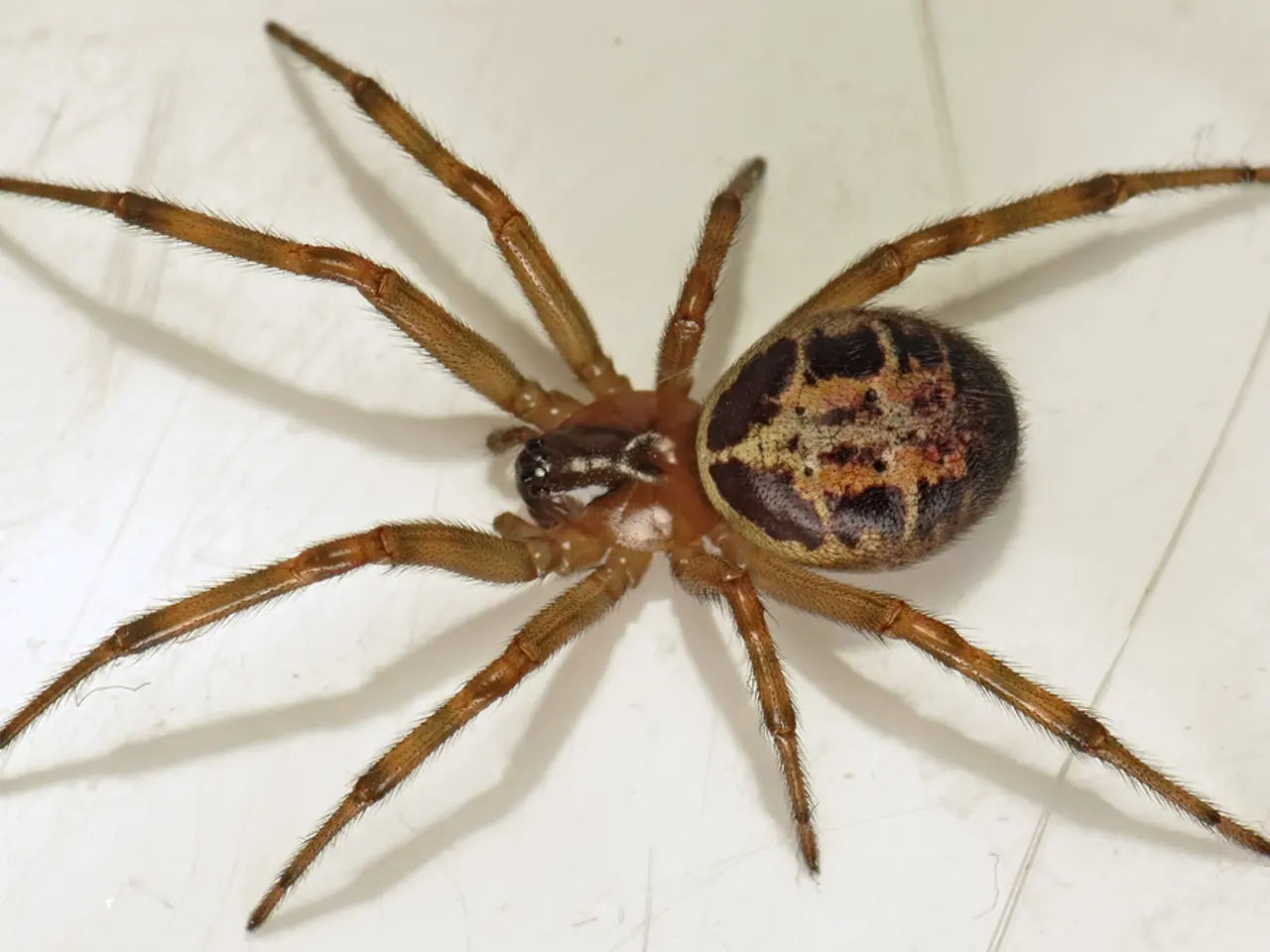Natural treatments for spider attacks: Actions to take and organic solutions
## Managing Spider Bites: Home Remedies and Precautions
When it comes to nonvenomous spider bites, they are generally harmless and can be managed at home with the right care and precautions. Here's a guide on how to handle such incidents and when to seek professional help.
### Initial Care and Cleaning
The first step in managing a nonvenomous spider bite is to wash the affected area with cool soapy water to clean the wound and reduce the risk of infection. Following this, apply a cool compress or ice pack to the bite to soothe pain, reduce swelling, and alleviate warmth at the site.
### Relieving Symptoms
Over-the-counter pain relievers like acetaminophen (Tylenol) or ibuprofen (Motrin, Advil) can be used if needed for pain management. Antihistamines such as diphenhydramine (Benadryl) can also help relieve itching and reduce swelling. Witch hazel, a natural remedy, has been suggested for its soothing effects on itch and inflammation caused by spider bites.
### Monitoring and Precautions
It's crucial to keep the area clean and dry and avoid scratching to prevent secondary infection. Monitor for signs of infection (increased redness, swelling, pus, warmth, or fever) and seek medical attention if these develop. Additionally, check your tetanus vaccination status and get a booster if you’re overdue, as any break in the skin can pose a risk.
### When to Seek Professional Help
While most nonvenomous spider bites can be managed at home, consult a healthcare provider if symptoms worsen or do not improve after a few days, you experience signs of an allergic reaction, or signs of infection appear.
### Summary Table
| Remedy | Purpose | Notes | |------------------------------|----------------------------------|----------------------------------------| | Wash with soap/water | Clean wound, prevent infection | Initial step[1][3] | | Cool compress/ice pack | Reduce pain, swelling | Use for 10–15 minutes at a time[1] | | OTC pain relievers | Relieve pain | Acetaminophen or ibuprofen[3] | | Antihistamines (Benadryl) | Reduce itching, swelling | Follow dosage instructions[3] | | Witch hazel | Soothe inflammation | Anecdotal use[2] | | Tetanus booster (if needed) | Prevent tetanus | Check vaccination status[3] |
In case of a venomous spider bite, immediate medical attention is necessary. It is not yet scientifically proven that turmeric or aloe vera can heal spider bite wounds, but they may provide symptom relief due to their anti-inflammatory properties.
Three venomous spiders live in the United States: the black widow, brown recluse, and tarantula. Most spiders are not usually aggressive, and bites often occur when people accidentally disturb a spider or the spider feels threatened. In some cases, venomous spider bites can cause more severe symptoms, and death from venomous spider bites is rare but can occur, especially if the person has severe symptoms.
To avoid being bitten by a spider, check for spiders before lifting logs or rocks, wear long sleeves and gloves for yard work, avoid accumulating piles of debris, keep garages, attics, and basements clean, get rid of empty cardboard boxes, place glue traps near baseboards or behind doors, and seal off any cracks or crevices around the home.
Remember, these remedies for nonvenomous spider bites are available to purchase in stores and online, including ice packs, ibuprofen, antihistamines, turmeric powder, and aloe vera gel. Always consult a healthcare provider for personalised advice and treatment.
- The guideline for managing a nonvenomous spider bite includes using over-the-counter treatments like acetaminophen (Tylenol) or ibuprofen (Motrin, Advil) for pain relief, alongside antihistamines such as diphenhydramine (Benadryl) to alleviate itching and swelling.
- Keeping with the home remedies, a cool compress or ice pack can help reduce the pain, swelling, and warmth at the site of the bite, while witch hazel, a natural remedy, may provide soothing effects on the itch and inflammation caused by spider bites.
- Additionally, when it comes to managing a nonvenomous spider bite at home, an initial cleanup involves washing the affected area with cool soapy water to prevent infection and keeping the wound clean and dry to prevent any secondary infections.
- In regards to mental health, it's essential to remember that dealing with an injury like a spider bite can be stressful, so practicing relaxation techniques or seeking support from friends, family, or mental health professionals might help manage the anxiety associated with the incident.
- For high-risk individuals such as those with medical-conditions like asthma, skin-care and skincare-related medical-conditions can become a concern, making it necessary to consult a healthcare provider for personalized advice on handling spider bites.
- Lastly, it's worth noting that CBD oil, a popular treatment for various conditions, can potentially provide relief for skin-conditions arising from spider bites due to its anti-inflammatory properties, although further scientific research is required to confirm this.




